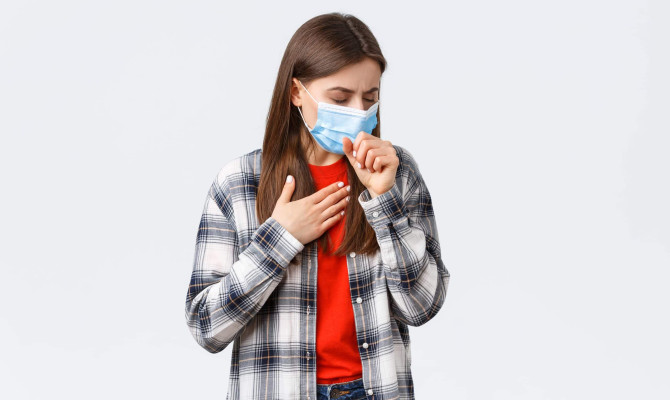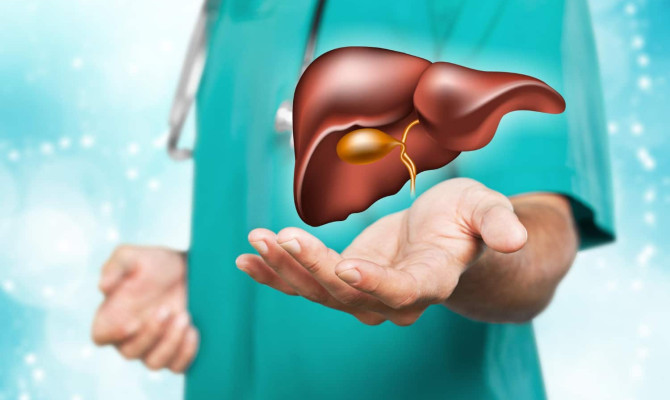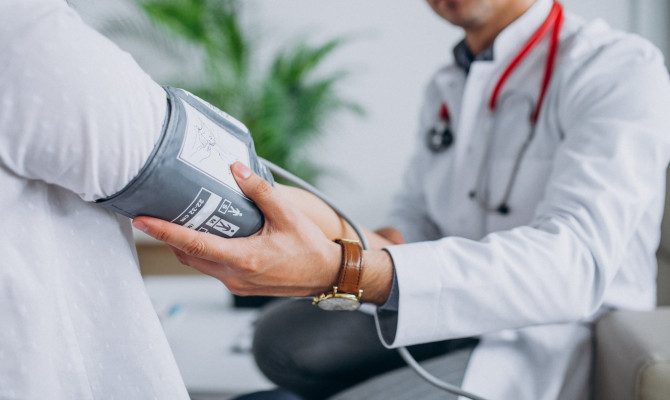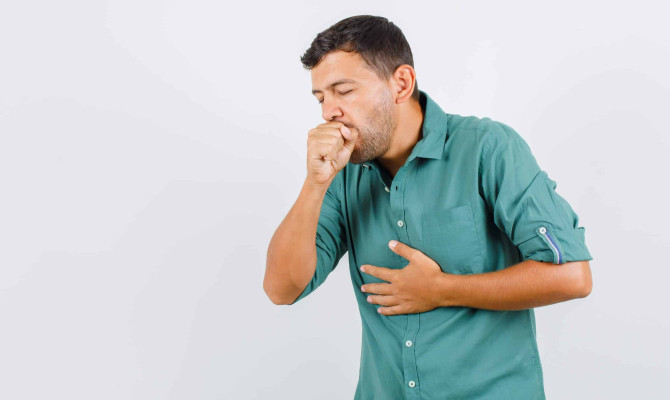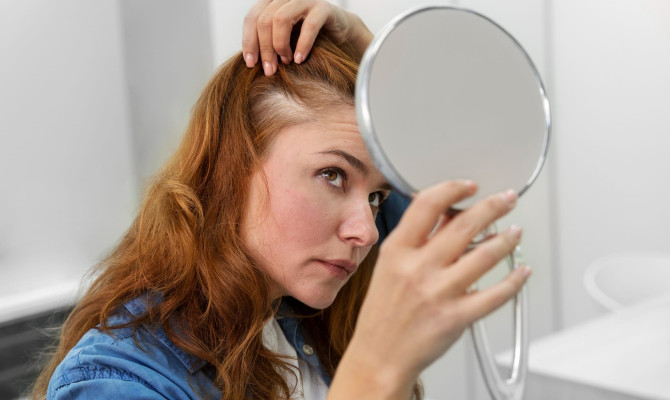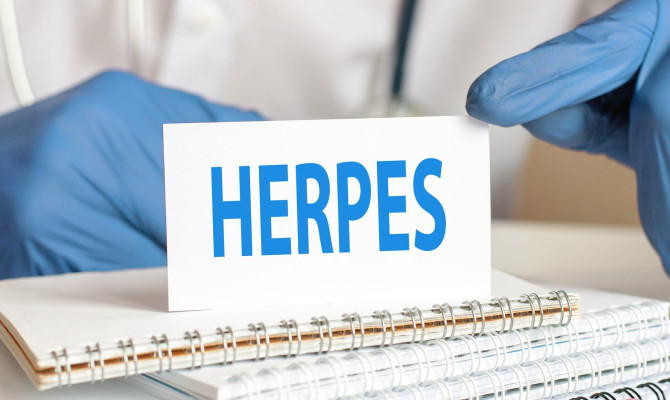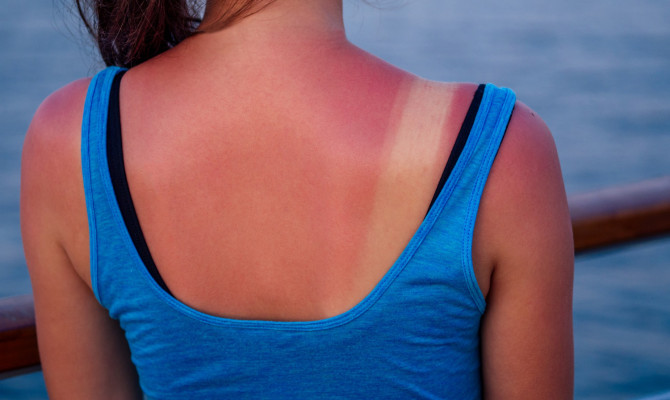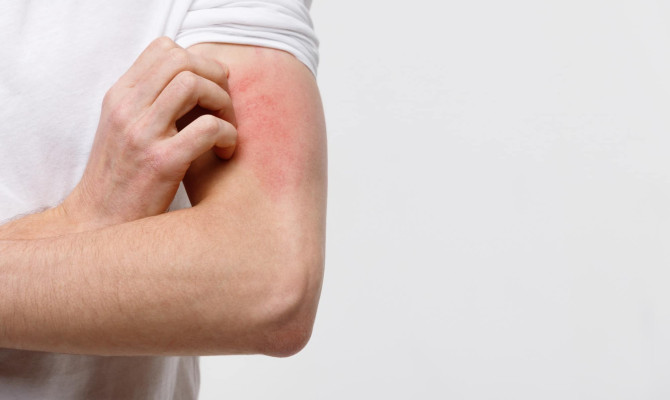Ringworm Infections: Understanding Symptoms, Types, Treatment and Prognosis

- Ringworm
- 22 Aug 2023
Overview
About Ringworm
Ringworm is globally recognized as the most common fungal infection of all time. It is a common misunderstanding that ringworm infection is caused by a worm which is utterly wrong. It is caused by a type of fungi known to us as dermatophytes that harm only superficial dead layers of the body such as skin, hair, and nails. It doesn’t affect the deeper tissues of the body.
The reason why it is called so is because the typical rash of the ringworm resembles a worm in the shape of a ring.
As stated in an article by the Centers for Disease Control and Prevention, fungal skin diseases are getting more drug-resistant to treatment. Recently, two cases of drug-resistant ringworm infections have been reported in the US where the severe form of Tinea did not improve even after antifungal creams were applied.1Overview| Researched based study from Cdc.gov
Ringworm infections affect a significant proportion of the population with estimates suggesting up to 25% of the world population is affected at some point in their lives. 2Overview| Researched based study from Wiley.com

Causes
Causes of Ringworm
Fungal infection
- Notably, Trichophyton, Micros Porum and Epidermophyton are three medically important species of fungi that primarily result in ringworm infections in humans.
They are spread in different ways depending on various factors such as:
- By direct contact with an infected person, pets or farm animals.3Causes| Researched based study from Hopkinsmedicine.org ,4Causes| Researched based study from Cdc.gov
- By direct contact with different household items such as hair brushes, combs, clothes, or even towels.
- They produce spores that can easily spread and stay on various articles of daily use for an ample period.
Risk factors

Risk factors of Ringworm Infection
Ringworm is highly contagious as this fungus easily spreads in warm, humid areas of the body.
Your possibility of getting a ringworm infection increases if you are:
- Living in a hot and humid climate.
- Wearing tight clothes that cause skin irritation and provide conditions for fungus to flourish or overheat parts of the body.3Risk factors| Researched based study from Hopkinsmedicine.org ,4Risk factors| Researched based study from Cdc.gov
- Living in overcrowded places.
- Sharing household items such as brushes, towels etc.
- Farmers, zoo keepers, gardeners and laboratory staff are at higher risk of getting ringworm.4Risk factors| Researched based study from Cdc.gov ,8Risk factors| Researched based study from Aafp.org
- Participating in sports that require skin-to-skin contact, such as wrestling, judo, combat sports based on grappling, and ground fighting.
- Have a weak immune system.
- Having poor hygiene habits or having sweaty skin.
- Have metabolic disorders such as obesity or type 2 diabetes.
Symptoms
Signs and symptoms of Ringworm
There are 4 telltale signs of ringworm infections which can be seen in all types of Tinea and therefore, are mentioned below:
- A classical ring-shaped rash with a raised outer border.
- Redness or inflammation of the affected skin.
- Itchy and scaly patches of skin.
- Discharge or pus is oozing out from the rash site.
Types
Types of Ringworm along with their clinical presentations
Different types of ringworm along with their distinctive clinical features are mentioned below:
Tinea corporis
It is normally understood as the ringworm of the body. It is usually observed in people of mixed age groups such as mostly seen in grown-ups and children. The predominant cause of Tinea corporis infections in the United States is Trichophyton rubrum.2Types| Researched based study from Wiley.com
- In Tinea corporis, the lesions typically start as erythematous (red) and scaly plaques.
- These plaques may quickly worsen and widen over time.
- The rash tends to look pink or red on light skin tones. Likewise, it appears to be brown or grey in color on a dark skin tone.
- Rash linked with Tinea corporis can evolve into numerous skin disorders. These can include scales, crusts, papules (small raised bumps), vesicles (fluid-filled blisters), and even bullae (larger fluid-filled blisters), particularly near the raised edges.
- Tinea corporis gladiatorum is a specific form of tinea corporis that is commonly seen in wrestlers. It often appears on the head, neck, and arms, due to the skin-to-skin touch during wrestling matches.6Types| Researched based study from Nlm.nih.gov
- The close physical contact and sweating in wrestling create an ideal environment for the spread of the disease.
- Practicing good hygiene, such as regular showering and wearing clean, dry clothing, can help prevent and manage this condition in wrestlers.6Types| Researched based study from Nlm.nih.gov
Tinea pedis
It is also commonly called athlete’s foot. It is frequently noticed in individuals who share crowded spaces such as changing rooms, sauna baths, pools etc. It is also seen in youngsters who don’t like to wear proper shoes or socks.
- It can affect the interdigital web spaces. The term is clinically used for moist, wounded areas between the toes.3Types| Researched based study from Hopkinsmedicine.org
- The inflamed area may eventually become scaly, or develop cold sores or pus in severe cases.
- The skin between the toes may flake, peel or crack.
- The feet may smell bad due to the build-up of moisture.
- The lesion is extremely itchy or painful, especially in immune-compromised patients such as HIV.
- Proper foot care, keeping the feet clean and dry, and wearing breathable footwear can help prevent and manage Tinea pedis.
Tinea cruris
It is also known as the ringworm infection of the private parts of the body such as areas around the groin or backside. It is also called jock itch because it is a common infection in athletes. It’s mostly seen in men and adolescent boys who sweat a lot due to puberty.
- It first appears as large circular patches of red or swollen skin.
- These inflamed patches cause intense itching between the creases where the body meets the legs
- After that, the rash spreads in two directions. It first extends distally which means down to the groin and inner thighs and then it extends proximally which means towards the center of the body such as to the waist or the buttocks.
Tinea capitis
It is normally called the ringworm infection of the scalp.
- This infection causes scaly, red, itchy bald spots on the scalp. The bald patches may grow bigger if they are left untreated. 5Types| Researched based study from Nlm.nih.gov
- It is remarkably common in preschool kids or infants.
- Kerions are a severe complication of tinea capitis. They are characterized by deep, boggy red areas on the scalp that exhibit a severe acute inflammatory response.
- These inflamed areas may also develop pustules or pus-filled lesions.
- Prompt medical attention and antifungal treatment are usually necessary to manage kerions effectively.
Tinea manuum
- It is also known as the ringworm of the hand.
- The clinical features include dry, scaly ring-shaped patches on the hand.
- Palms become cracked and skin started peeling off in an acute infection of the Tinea manuum.
Tinea barbae
- It is also known as the ringworm of the beard.
- This infection appears on the neck, chin and cheeks of adolescent boys or young adults.
- These patches may look like acne or resemble a skin condition where hair follicles become inflamed.3Types| Researched based study from Hopkinsmedicine.org
- Hair loss occurs in the affected area.
- In some situations, Tinea barbae infections may uniformly spread to the whole beard regions of the chin, cheeks and neck. This can lead to the formation of thickened, hardened, and wart-like growths on the skin.
- Some people also experience chronic tiredness or swollen lymph nodes.
- By washing hands after coming into contact with farm animals and by not sharing personal grooming items with others.
Tinea unguium or Onychomycosis
It is also known as the ringworm of the toenails or fingernails. This condition can result in the nails to become deformed, hard, and easily breakable.
- Callous nails then began to detach from the nail bed causing immense pain.7Types| Researched based study from Nlm.nih.gov
- The cracked nails may discolor. It may turn yellow and develop brown patches or white spots.
- In severe cases, the thickened nails can exert pressure on the surrounding tissues, potentially impairing circulation and causing discomfort or pain.
- Prevention: By keeping fingernails and toenails short and dry and by keeping your hands dry.
Stages
Stages of Ringworm infection
Ringworm infection typically progresses through several stages:
Incubation Period
- It is the time duration between when a person is exposed to the ringworm infection and when he starts to develop the rash.
- During this initial stage, there may or may not be any visual signs of infection.
Redness and Itchiness
- It is the stage where the first visible sign appears which is usually a red, circular rash that may be itchy or inflamed to touch.
Infectious period
- As the infection continues, the outer edge of the rash becomes raised and it is the stage where the rash starts becoming scaly and crusty. This is the most important stage where the spreading of the infection to nearby skin areas also occurs. Overlapping rings are also observed in this stage.
Healing and recovery phase
- This is the final stage where with appropriate treatment; the symptoms of ringworm gradually subside. The rash clears up, and the itching and redness disappear. It is crucial to finish the full therapy sessions to prevent the disease from recurring.
Diagnosis
Diagnosis
Healthcare providers who are specialized in diagnosing and treating such skin diseases are known as a dermatologist.
The diagnosis of ringworm is typically made based on a combination of the following findings:
Patient health history and physical examination
- The typical appearance of the ring-shaped rash is often sufficient for your doctor to diagnose ringworm during a physical exam.3Diagnosis| Researched based study from Hopkinsmedicine.org
Direct microscopic examination
- Skin scrapings and nail-cutting samples are taken to examine under a direct microscope for diagnosis of Tinea infections such as Tinea corporis and Tinea ungium.
- The sample is placed on a 10 % potassium hydroxide solution on a glass slide which shows septate hyphae under a microscope.8Diagnosis| Researched based study from Aafp.org
Wood lamp examination under ultraviolet light
- It may be performed for diagnosis of lesions of Tinea capitis which is caused by Microsporum species.
- When the sample is exposed to ultraviolet light from a wood lamp, it reveals a bright yellow-green color of septate hyphae.8Diagnosis| Researched based study from Aafp.org
Fungal Culture tests
- Fungi are frequently cultured on Sabouraud’s agar which develops typical fungal hyphae at room temperature.3Diagnosis| Researched based study from Hopkinsmedicine.org ,8Diagnosis| Researched based study from Aafp.org
Skin biopsy
- In some rare or severe cases of ringworm, a skin biopsy is needed to narrow down the differential diagnosis.
Treatment
Treatment of Ringworm Infections
Your dermatologist may prescribe various antifungal medicines to treat different types of ringworm infections according to the severity of the disease. These products are available in the market in different pharmaceutical formulations such as pills, gels and ointment.
For Tinea barbae (Beard Ringworm)
- Topical antifungal medicines are often used for mild symptoms of fungal skin infections.
- Oral Griseofulvin is used in severe cases.8Treatment| Researched based study from Aafp.org
- Oral Terbinafine is known to be effective, and in many cases, the infection can resolve within four weeks of starting the therapy.
- Oral Itraconazole can be recommended as a one-month therapy for some fungal infections. It is often prescribed at a dosage of 400 mg per day, divided into two doses, for one week.8Treatment| Researched based study from Aafp.org
For Tinea corporis (Ringworm of the body)
- Topical therapy is often recommended for localized fungal infections because they generally do not invade living tissues deeply.
- Topical azoles (such as clotrimazole, and miconazole) and allylamines (such as terbinafine) are commonly used.7Treatment| Researched based study from Nlm.nih.gov
- Corticosteroids are sometimes co-prescribed with antifungal creams for their anti-inflammatory effect. They can help reduce redness, itching, and inflammation associated with fungal infections.
For Tinea cruris (Jock Itch)
- Topical or local antifungal creams such as Imidazole or Terbinafine are the first line of treatment for Tinea cruris . 8Treatment| Researched based study from Aafp.org
For Tinea pedis (Athlete’s foot)
- It can be treated with topical antifungal medications, oral antifungals, or a combination of both, depending on the severity and extent of the infection.
- They are typically applied to the affected area for 2-3 weeks. They help eliminate the fungal infection on the skin’s surface.8Treatment| Researched based study from Aafp.org
- Naftifine gel or cream 2% is indicated for interdigital tinea pedis, which is an infection between the toes7Treatment| Researched based study from Nlm.nih.gov [8]
For tinea capitis (Scalp Ringworm)
- Oral terbinafine is considered the first-line therapy for Tinea capitis due to its high cure rate, and affordable prices.
- Alternatively, Itraconazole and Fluconazole in the form of pills are advised for Tinea capitis.7Treatment| Researched based study from Nlm.nih.gov ,8Treatment| Researched based study from Aafp.org
- In the case of Kerion, prompt treatment with griseofulvin is typically recommended.8Treatment| Researched based study from Aafp.org
- Topical formulations are usually not suggested for the therapeutic management of Tinea capitis.
- Medicinal shampoos with an active ingredient such as Selenium sulfide are oftentimes used in the early stages to decrease the spread of infection.8Treatment| Researched based study from Aafp.org
Alternative therapies
- Home remedies such as apple cider vinegar and the use of garlic, and tea tree oil are also effective in some cases but not usually recommended by a dermatologist.3Treatment| Researched based study from Hopkinsmedicine.org
Complications
Complications of Ringworm
Tinea can become infected secondary by:
- Superficial candidal or bacterial infections
- The affected area may become lichenified (it means the skin has become thickened and leathery) and hyper-pigmented in the setting of a chronic infection.
- Unreasonable use of steroid creams can cause the aggravation of symptoms.
- Majocchi granuloma is the most commonly seen complication of Trichophyton rubrum infection.
- Kerion refers to a severe inflammatory response to Tinea capitis and requires systemic antifungal treatment. If not treated on time, kerion may cause scarring of the underlying skin and hair loss permanently.
Prognosis
Prognosis of Ringworm
- The prognosis of the Tinea crisis is generally good with proper diagnosis and treatment. Although ringworm infections can cause discomfort and inconvenience, they are typically not serious or life-threatening. Ringworm can recur if the infection is not fully treated.
- It is crucial to follow the dermatologist’s recommended treatment plan to keep up with the follow-up appointments.
Any feedback on this article?
 This Articles content was accurate
This Articles content was accurate Very Informative Article
Very Informative Article I have a question or a comment
I have a question or a comment
 This article contains inaccurate content
This article contains inaccurate content This article was not helpful
This article was not helpful I have a question or a comment
I have a question or a comment
We appreciate your helpful feedback!
Checkout our social pages
References
-
Centers for Disease Control and Prevention
Notes from the Field: First Reported U.S. Cases of Tinea Caused by Trichophyton indotineae | Overview
-
Wiley Online Library
Epidemiological trends in skin mycoses worldwide | Overview | Types
-
John Hopkins Medicine
Tinea Infections (Ringworm) | Types | Risk factors | Causes | Diagnosis | Treatment
-
Centers for Disease Control and Prevention
Ringworm | Risk factors | Causes
-
National Library of Medicine
Tinea Capitis | Types
-
National Library of Medicine
Cutaneous Infections in Wrestlers | Types
-
National Library of Medicine
Therapy of Skin, Hair and Nail Fungal Infections | Types | Treatment
-
American Academy of Family Physicians
Diagnosis and Management of Tinea Infections | Risk factors | Diagnosis | Treatment












